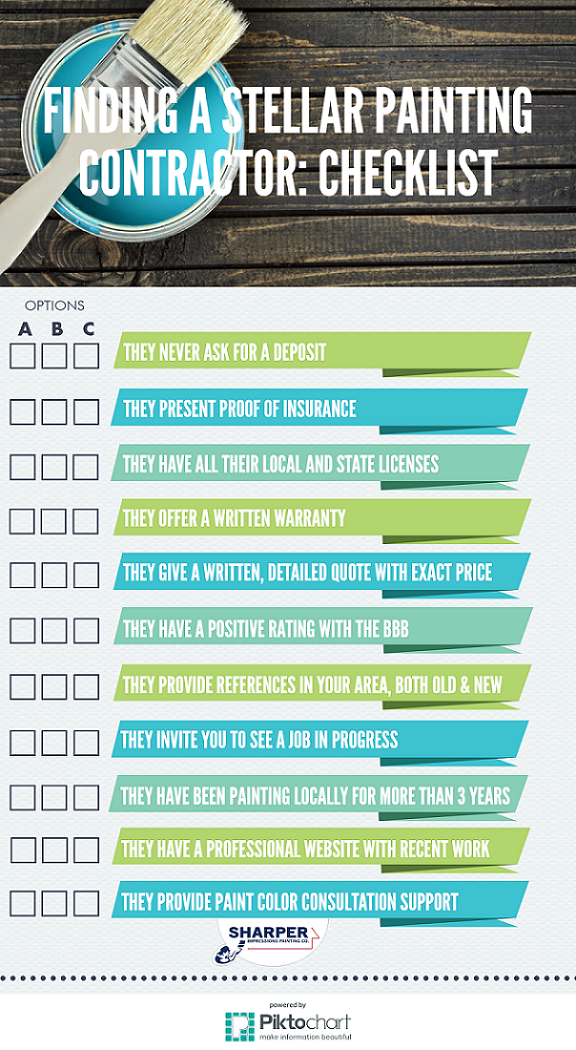Discover How The Transformative Nature Of Paint Can Affect Your Feelings And Mood By Evaluating The Detailed Links In Between Shade Options And Your Emotional Responses
Discover How The Transformative Nature Of Paint Can Affect Your Feelings And Mood By Evaluating The Detailed Links In Between Shade Options And Your Emotional Responses
Blog Article
Web Content By-Wyatt Gross
When it concerns choosing paint colors for an area, the choices made expand past simple appearances. The psychology of color looks into just how different shades can influence our emotions and mental health, forming the atmosphere of an area in extensive ways. Recognizing the effect of color on mood can result in willful and calculated design decisions that accommodate enhancing various facets of our day-to-days live. By checking out the intricate relationship between color and psychology, one can uncover the subtle yet powerful ways in which paint choices impact our psychological experiences within a given atmosphere.
The Effect of Shade on Emotions
Frequently, the colors we border ourselves with can significantly affect our mood and general well-being. The influence of shade on feelings is a well-researched field within psychology and interior decoration.
Warm colors like red, orange, and yellow are recognized to stimulate sensations of energy, heat, and comfort. These tones can stimulate conversation and produce a comfy setting in a space.
In contrast, awesome shades such as blue, eco-friendly, and purple tend to have a soothing effect, advertising relaxation and tranquility. These colors are usually favored in bed rooms and offices to create a feeling of peacefulness.
Additionally, How Long To Paint A Whole House and saturation of colors play an essential role in determining their psychological impact. Bright, lively colors can generate feelings of exhilaration and interest, while muted tones are a lot more calming and mild.
It is necessary to consider the preferred psychological reaction when choosing paint colors for different rooms in your home or office. By comprehending the psychology of shade, you can develop settings that support your psychological well-being and enhance your total state of mind.
Selecting the Right Paint Color Styles
Recognizing the psychology of color and its influence on feelings can guide people in choosing the appropriate paint colors for their living spaces. When choosing https://www.realtor.com/advice/home-improvement/paint-maintenance-and-touch-up-tips/ , it's important to consider the state of mind you intend to create in each room.
For instance, relaxing shades like blue and eco-friendly are perfect for bedrooms and relaxation locations, as they promote a sense of peace. On the other hand, vivid tones like yellow or red can energize and boost conversation in social rooms such as living spaces or eating areas.
In addition to the psychological impact, the size and lights of a space need to likewise affect shade options. Lighter shades can make a little space feel even more spacious, while darker tones can include warmth and comfort to bigger locations. Natural light improves the means colors show up, so it's essential to check paint examples in different lighting conditions before making a final decision.
Inevitably, picking the appropriate paint colors includes a thoughtful factor to consider of both psychological reactions and sensible aspects to produce a harmonious and comfortable living environment.
Producing the Preferred Atmosphere
Achieving the desired ambience in an area entails a calculated mix of shade selections and lights factors to consider. Shade plays a crucial role in setting the mood of a room. Cozy tones like reds, oranges, and yellows can produce a comfy and welcoming ambience, excellent for spaces where convenience is key, such as living rooms or rooms.
On the other hand, awesome colors like blues and greens evoke a sense of calmness and relaxation, making them optimal for locations where tranquility is wanted, like shower rooms or meditation areas.
Along with shade, lighting is another crucial consider forming the atmosphere of a space. Soft, cozy illumination can boost the warmth of an area, while brilliant, awesome lighting can invigorate and boost the mood. Dimmer switches or flexible lights fixtures provide flexibility, allowing you to adjust the lights to fit different tasks or moods throughout the day.
Conclusion
To conclude, the psychology of shade demonstrates the considerable effect paint options can carry our mood and feelings within a room.
By understanding just how various colors evoke specific feelings and picking paint shades as necessary, we can develop settings that promote power, comfort, relaxation, or excitement.
Meticulously choosing the ideal shades can aid us to affect our mood and total health in an offered space.
